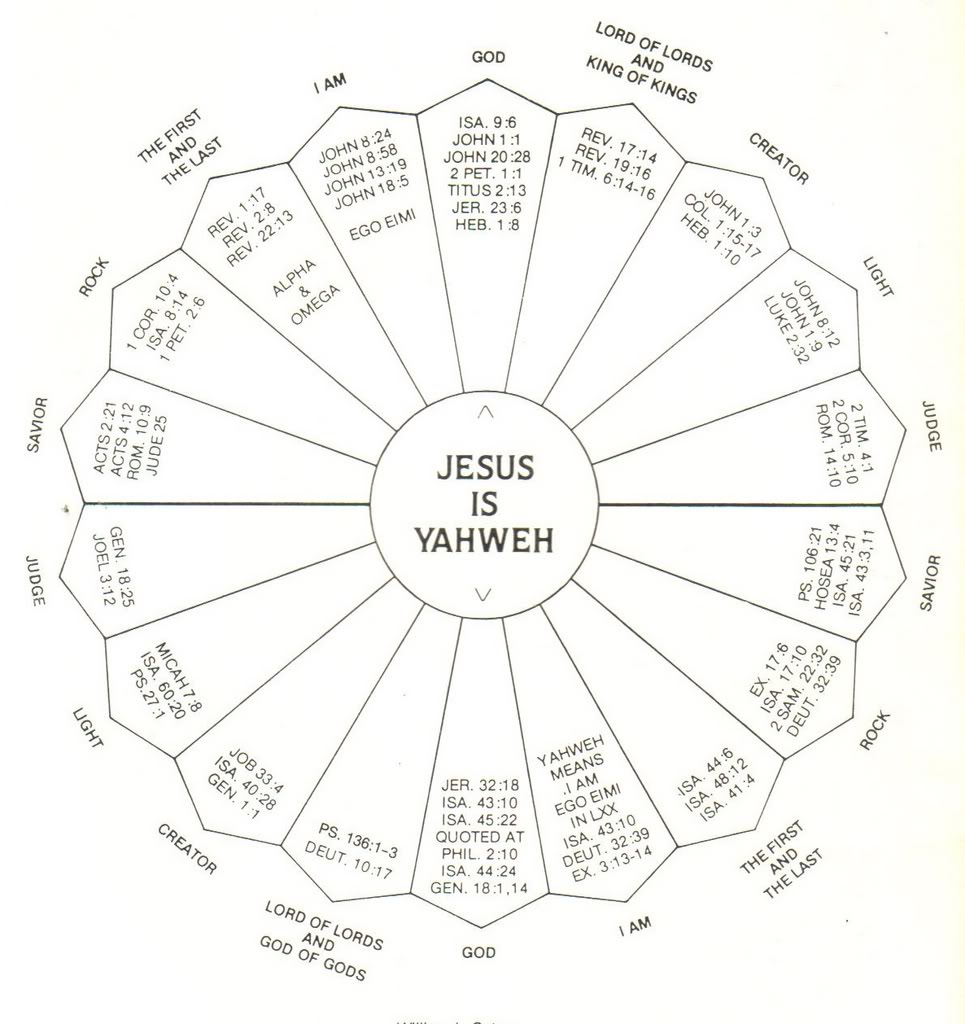A few years ago I ran across this chart that arranges Old Testament passages about God in juxtaposition to New Testament passages that use the same terminology about Christ. Check it out:

It’s from a booklet called Questions for Jehovah’s Witnesses (Who Love the Truth), by William and Joan Cetnar. The radial design is eye-catching but not necessary: the same information could be displayed in a two-column chart for greater clarity. But laid out as it is, the easiest way to read it is to turn the book around and let your eye run from the God side to the Christ side, always crossing over the center claim: “Jesus is Yahweh.”
That fits the polemical purpose of the book: to refute Jehovah’s Witnesses, who claim that Jesus is not divine but merely the greatest of all creatures. To follow the argument, you have to go over and over that central claim. Also, a chart would have 9 columns and give the impression that it could have had more or fewer. This sunburst or sunflower design silently communicates completeness: a perfect circle of cross-references, radiating out from the truth of the deity of Christ. Or maybe converging on that conclusion.
Clever design it itself a type of argument. Visual rhetoric persuades.
More importantly, though, some of the cross-references in the diagram have serious argumentative force. Some are what I would call devotional in value, illustrating something already believed rather than establishing the conclusion.
If you’ve made the lifestyle choice of arguing with Jehovah’s Witnesses in particular, this is a very helpful chart. Jumping back and forth between OT and NT in this way, it bypasses the Watchtower filters, the cooked New World translation, and the expectations of the average elder trained in anti-trinitarian arguments.